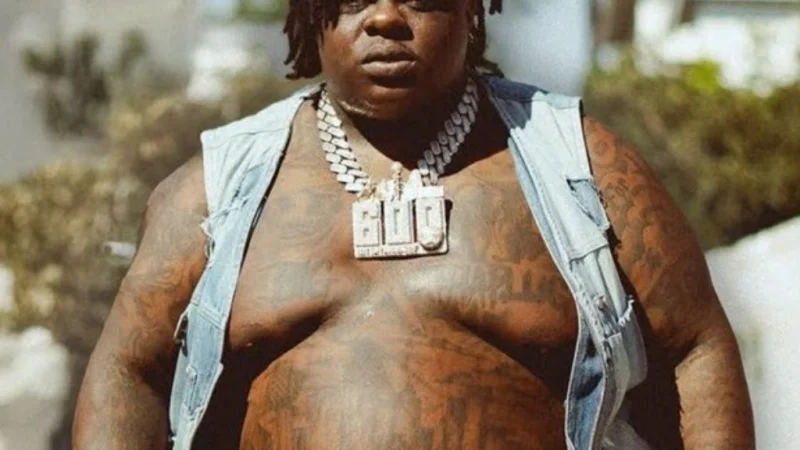The Armenian Gampr: An Ancient Guardian of the Highlands

Origins and Historical Context
Ancient Beginnings
The Armenian Gampr is not a modern invention; it is a landrace rather than a strictly standardized breed. According to breed clubs, the Armenian Gampr dates back to at least 12,000 BCE, making it one of the oldest livestock guardian dog lines in the world. The term “Gampr” in Armenian is often interpreted as “guardian dog” or “wolf-choker”, reflecting its traditional role protecting flocks from predators such as wolves and bears.

Historically the Armenian Highlands and the southern Caucasus region provided a challenging environment—harsh winters, mountainous terrain, wild predators—and shepherds and pastoralists required reliable guardian dogs. The Armenian Gampr emerged through functional selection over generations: dogs that could think independently, assess threats, and protect the flock became indispensable.
Development through Empires and Modernization
During the Soviet era, the Armenian Gampr’s story became intertwined with broader livestock-guardian breed developments in the Caucasus. The Soviet kennel programs in the 1920s and onwards selected many native dogs, including those from Armenia, to form the basis of the well-known Caucasian Shepherd Dog (also called Caucasian Ovcharka). These programs emphasised standard phenotypic traits, large size and show features, which diverged from the original functional variability of the Armenian Gampr.
Following Armenia’s independence after the Soviet era, the Armenian Gampr regained recognition as part of Armenia’s national heritage. The breed standard was developed in the 1990s, and in 2011 the breed was formally recognized by the International Kennel Union (Moscow) under the guidance of the Armenian Kennel Club. This recognition helped raise the breed’s profile internationally and solidified its status as a national symbol.
Cultural Significance
Beyond its functional role, the Armenian Gampr has also been an emblem of Armenia’s pastoral identity, ancient lineage and survival under difficult circumstances. Its genetic resilience, independence and protective instincts resonate with Armenia’s broader narrative of endurance and heritage. Some sources point to cave drawings, archaeological finds and folk legends that hint at the breed’s long‐standing presence in Armenian lands.
Breed Description and Key Characteristics
Physical Attributes
Although the Armenian Gampr is a landrace and therefore exhibits considerable variability, there are several key traits that define the breed. According to sources:
-
Males and females display sexual dimorphism: males are somewhat larger and heavier.
-
The coat: The Armenian Gampr may have a short or long outer coat, but always a thick undercoat suited for mountain or harsh terrain use. The colour can be any (except perhaps disfavoured colours such as blue merle in some registries).
-
The build: While rugged, the breed is noted for streamlined musculature rather than overly bulky structure. Some authors emphasise that the Armenian Gampr differs from the bulkier modern Caucasian Shepherd Dog in being more agile, more functional rather than just massive.
-
Height and weight: For example, one guide quotes weight between 120–180 pounds (approximately 54–82 kg), height around 25–35 inches (63–89 cm) for some specimens.
Temperament and Behaviour
One of the most remarkable aspects of the Armenian Gampr is its blend of independence, intelligence, loyalty and protective instinct. Key elements:
-
Guardian instinct: The primary historical purpose of the Armenian Gampr was to guard flocks against wolves and other predators in remote pastures.
-
Independent decision‐making: Unlike some breeds that wait for direct commands, the Armenian Gampr often assesses a situation and acts accordingly. As one article states, “They will protect their family and livestock with their life, but only after assessing the situation and deciding on an appropriate, rational reaction.”
-
Affection and family bond: While independent, many accounts highlight the breed’s loyalty and gentle side, especially toward the household, family and children.
-
Working drive and functional fitness: The breed has been developed by shepherds to patrol large terrain, endure extremes in weather, and adapt to varying pasture conditions. Thus the Armenian Gampr carries with it a strong work ethic and stamina.
Application: Traditional and Modern Roles
Traditionally, the Armenian Gampr served as a flock guardian dog—protecting sheep and goats in upland pastures, warding off wolves and bears, working in semi‐nomadic or mountain settings. In more recent times, while many dogs still serve in rural roles, others have been kept as family guardians, show dogs, or imported by enthusiasts abroad. The breed’s adaptability, combined with the drive to preserve its heritage, has seen renewed interest globally.
The Armenian Gampr in Implementation: Uses, Preservation, and Breeding
Traditional Implementation in Rural Armenia
In village and pastoral communities across the Armenian Highlands and southern Caucasus region, the Armenian Gampr has been a part of daily life: shepherds, flocks, mountain pastures, and guard duty. In these settings the dogs are often free‐roaming with flocks, making perimeter patrols, detecting predators, alerting shepherds, and sometimes actively engaging threats. Their role goes beyond mere sight‐and‐sound—they must often operate without direct human oversight and thus require strong independent instincts.
Furthermore, the breed’s value is not only protective: by guarding livestock, they enable rural households to maintain viable sheep and goat populations, contributing to livelihoods, local economies (e.g., wool, meat, dairy), and pastoral culture. In many respects, the Armenian Gampr is embedded in the social welfare and rural development ecosystem of mountainous Armenian regions—though not always explicitly documented in those terms.
Breeding and Preservation Initiatives
With the breed’s recognition and international interest, there have been concerted efforts for preservation, breeder networks, registries and genetic integrity campaigns. For instance, the official club website notes that the Armenian Gampr benefits from “over 14,000 years of hardwired instinct built right into them.”
One challenge is the tension between preserving the landrace diversity (which allows functional variability) and pushing for a standardized breed (which can narrow genetic pool). Some specialists caution that intensive selection for phenotypic traits may undermine genetic health of a landrace like the Armenian Gampr.
Exportation and Global Spread
While the Armenian Gampr has been centred in its homeland, exported lines and breed clubs exist abroad, for instance in North America. One website notes that importing from Armenia helps maintain genetic diversity.
As a rare breed internationally, the Armenian Gampr has appeal to enthusiasts of livestock guardian dogs, heritage breeds, and functional working dogs.
Comparisons with Other Guardian Breeds
Armenian Gampr vs Caucasian Shepherd Dog
The Armenian Gampr and the Caucasian Shepherd Dog (Caucasian Ovcharka) share historical terrain: both originate from the Caucasus region and both served pastoral and protective roles. However, there are key differences:
-
The Armenian Gampr is a true landrace, developed through centuries for function with less emphasis on show‐type uniformity; the Caucasian Shepherd has been subject to more formal breed standardisation and selective breeding for traits such as size and appearance.
-
The Armenian Gampr tends to maintain a higher degree of genetic variability, adaptability and less exaggerated physical traits, whereas the Caucasian Shepherd Dog may lean toward bulkier frames suited to guard compounds.
-
In temperament, while both are protective, the Armenian Gampr’s independence and decision‐making are more emphasised.
Armenian Gampr vs Other Livestock Guardian Dogs
Comparing with other well‐known livestock guardian breeds (e.g., Anatolian Shepherd, Kangal, Pyrenean Mountain Dog, Komondor), the Armenian Gampr stands out for its antiquity, cultural specificity, and the fact that it emerged in semi‐wilderness conditions of the Armenian Highlands and Caucasus. Its dual role—protecting livestock and functioning as farm/family guardian in rugged terrain—gives it a form of versatility less typical in breeds that were more strictly standardised.
Regional Impact: Breed in Its Homeland
In Armenia and the surrounding highland regions, the Armenian Gampr has regional impact in several ways:
-
Cultural heritage: As mentioned, the breed has become a symbol of Armenian identity, resilience and rural tradition.
-
Pastoral economy: By providing protection to flocks, the Armenian Gampr helps sustain pastoral livelihoods, especially in rugged terrain where modern fencing or mechanical deterrents may be less effective.
-
Biodiversity and landrace preservation: The breed’s survival contributes to maintaining genetic diversity in dogs, representing an agricultural heritage that links humans and working animals.
-
Tourism and awareness: Interest in rare breeds, heritage animals and rural traditions means the Armenian Gampr has potential to draw attention to rural Armenia, shepherd culture, heritage tourism, and breed conservation.
Success Stories and Case Studies
Breed Revival Efforts
In recent years, breed clubs in Armenia and abroad have highlighted success in rediscovering, registering and promoting the Armenian Gampr. For instance, the website “In Search of the Gampr: The Molosser of Armenia” recounts how dedicated enthusiasts documented the breed’s variants (hovashoon – shepherd’s dog type; gelkheght – wolf‐hunter type; etc) and worked to preserve original lines rather than letting them be lost to crossbreeding or overshadowed by standardised show types.
Functional Deployment
There are accounts of Armenian Gamprs still at work protecting sheep or goats in mountainous communities, sometimes patrolling pastures, alerting shepherds, and helping reduce losses to predators. For example, one farmer’s blog describes how a guardian dog from Armenia (imported) protects the farm’s poultry and livestock in the United States—showing how the breed’s functional qualities translate even outside its homeland.
Cultural Representation
The Armenian Gampr has also taken on cultural representation: in Armenia, monuments and stamps depict the breed; the dog is increasingly promoted as part of Armenia’s living heritage.
Key Challenges Facing the Armenian Gampr
Genetic Dilution and Crossbreeding
One of the most prominent challenges is preserving the breed’s unique gene pool. As noted, many local dogs were taken away during Soviet times or crossbred with imported breeds. The “landrace” quality of the Armenian Gampr means that heavy focus on aesthetic traits could reduce functional variability and resilience.
Decline of Pastoral Practices
With modernization, mechanisation, changes in agriculture, urban migration and decline in traditionally shepherded flocks, the ecological niche of the Armenian Gampr may be shrinking. Less demand for guardian dogs means fewer opportunities for working deployment, which may reduce functional selection pressures and integration into local rural livelihoods.
Standardisation vs Functional Diversity
While formal breed standards offer recognition, there is risk that standardisation may limit the natural adaptability and variability that make the Armenian Gampr robust. Breed clubs must balance the need for typical breed markers with preserving the broad functional gene pool.
International Misidentification and Mis‐labeling
Because of its rarity and exotic appeal, the Armenian Gampr is sometimes mis‐labeled or crossed indiscriminately, or mistaken for other large guardian breeds. Such misidentification can undermine authenticity of breeding lines and confuse buyers or adopters. Breed clubs warn against “false labeling”.
Health and Welfare Considerations
Large working dogs come with health and welfare responsibilities: joint issues, hip dysplasia, appropriate diet, activity level, space requirements. Prospective owners unfamiliar with the breed may struggle with the demands of a guardian dog of this size and historical function.
The Future Prospects of the Armenian Gampr
Strengthening Rural and Pastoral Integration
A promising direction is the re‐integration of the Armenian Gampr into rural development and social welfare frameworks: for example, programs that support shepherds in mountainous regions might include subsidised guardian dogs or training for the Armenian Gampr, thereby linking breed preservation with sustainable livelihoods and regional development. This would enhance the breed’s functional relevance while supporting rural communities.
International Breed Promotion with Responsibility
International interest in the Armenian Gampr can be harnessed positively if guided by responsible breeding, import/export protocols, and education about the breed’s functional origins and requirements. Through collaborations between Armenian clubs and international guardians, the breed can gain global awareness while preserving its integrity.
Genetic Research, Documentation and Conservation
Continuing genetic research and documentation can highlight the Armenian Gampr’s uniqueness and evolutionary value as a landrace guardian dog. Conservation initiatives could fund breed registries, health screening, genetic diversity monitoring and sustainable breeding practices.
Broadening Roles: Companion, Working Dog, Heritage Breed
While maintaining its guardian‐dog essence, the Armenian Gampr may find broader roles: family protector, rural property guardian, working dog in farms or estates, and ambassadors for Armenian heritage. With proper socialisation, training and environment, the breed can adapt to modern roles while retaining its character.
Education and Public Awareness
Raising awareness—among breeds enthusiasts, potential owners, rural communities, policymakers—about what the Armenian Gampr truly is (and what it is not) will help ensure more informed decisions, better care, and stronger preservation. Outreach about the breed’s history, function, challenges and requirements can build a responsible community around it.
Why the Armenian Gampr Matters Beyond the Breed
The story of the Armenian Gampr goes beyond dogs. It speaks to themes of cultural resilience, rural economy, biodiversity, and the interplay between humans and working animals. In an era of rapid urbanisation, mechanisation and globalisation, the Armenian Gampr is a reminder of the value of heritage, of working partnerships between species, and of ecological and cultural continuity.
In terms of policy or rural development frameworks, promoting heritage breeds like the Armenian Gampr can dovetail with themes of women’s empowerment, rural livelihoods, social welfare initiatives and regional identity. For example, in remote village settings where women manage livestock, the presence of capable guardian dogs can reduce workload, enhance security of assets and thereby support empowerment. In broader terms, the breed offers a case study of how functional animal genetics, rural tradition and cultural heritage intersect in meaningful ways.
Summary
In sum, the Armenian Gampr is a rare and ancient landrace guardian dog entrenched in Armenian highland tradition. From its origins guarding flocks centuries ago to its contemporary status as a national symbol and functional working dog, the Armenian Gampr embodies resilience, adaptability and cultural identity. While challenges remain—genetic dilution, declining pastoral practices, standardisation pressures—the future is promising if stakeholders engage responsibly, link breed conservation with rural livelihood development, and maintain the functional integrity of the dog. For anyone interested in heritage breeds, pastoral culture or large guardian dogs, the Armenian Gampr is not merely a breed—it is a living legacy.
Frequently Asked Questions
1. What is the Armenian Gampr’s primary purpose?
The Armenian Gampr was primarily developed as a livestock guardian dog, protecting sheep, goats and other flocks from predators such as wolves in the mountainous pastures of Armenia and the southern Caucasus. Over time, it has also served as a family and property guardian.
2. How large does the Armenian Gampr grow?
While size varies given its landrace status, the Armenian Gampr is a large dog. Some guides list weights between 120-180 pounds (approximately 54-82 kg) and heights around 25–35 inches (63–89 cm) for typical specimens.
3. Is the Armenian Gampr suitable for a typical urban pet home?
Because of the breed’s history, size, energy level and independent working instincts, the Armenian Gampr is best suited to homes with sufficient space, activity opportunities and owners experienced with large guardian dogs. Urban apartments or small yards may not be ideal unless the dog’s physical and mental needs are fully met.
4. What makes the Armenian Gampr different from other guardian breeds like the Caucasian Shepherd Dog?
The Armenian Gampr differs by being a genuine landrace, developed through centuries for function rather than strict breed standardisation. It maintains greater genetic variability, tends to be more agile and less extreme in build than some standardised guardian breeds, and has a distinct cultural and geographic heritage tied to the Armenian Highlands.
5. What are the main health concerns for the Armenian Gampr?
As with many large working dogs, hip and elbow dysplasia, joint issues and weight‐related stress are considerations. Because the Armenian Gampr is less intensively bred for appearance and more for function, there may be fewer extreme conformational defects—but responsible breeding, health screening and maintenance are still important.
6. How can the Armenian Gampr help rural development or social welfare?
By supporting pastoral livelihoods—guarding flocks, reducing predator losses, enabling sheep and goat enterprises—the Armenian Gampr can contribute to rural economic stability. In remote communities (including women‐led livestock enterprises), access to reliable guardian dogs can enhance security of assets, reduce labour burdens and support empowerment. Conservation of the breed thus aligns with rural development, heritage preservation and biodiversity goals.
7. What steps should be taken to preserve the Armenian Gampr for the future?
Key measures include: maintaining functional breeding programs that prioritise working ability over purely show traits; documenting and monitoring genetic diversity; integrating the breed into rural working contexts rather than relegating it solely to show or pet status; raising public awareness about its needs; ensuring responsible ownership and import/export practices; and forging partnerships between Armenian breeder clubs, international enthusiasts and rural stakeholders.
In conclusion, the Armenian Gampr represents far more than another dog breed—it is a bridge between past and present, nature and culture, working tradition and modern interest. As efforts continue to promote its recognition, preserve its gene pool and integrate its role into both Armenian and global contexts, the Armenian Gampr stands as a testament to the enduring value of functional, heritage breeds in the 21st century.






